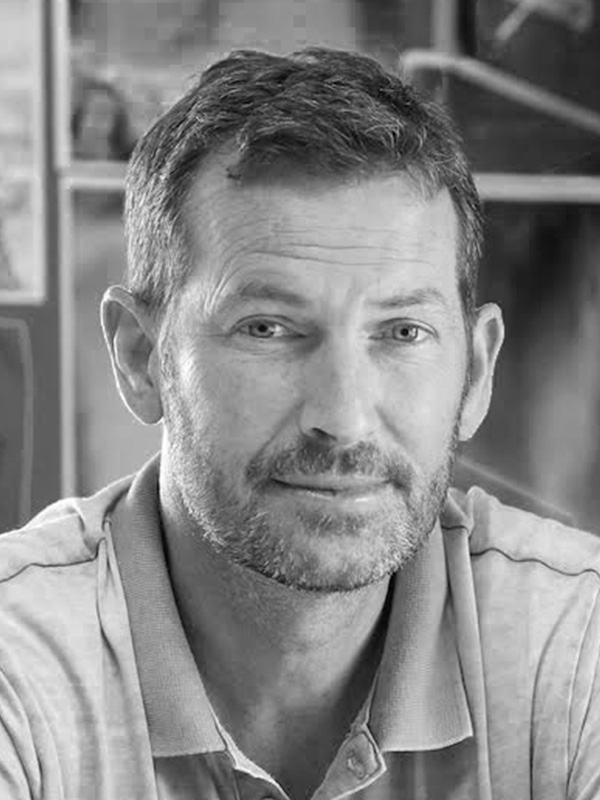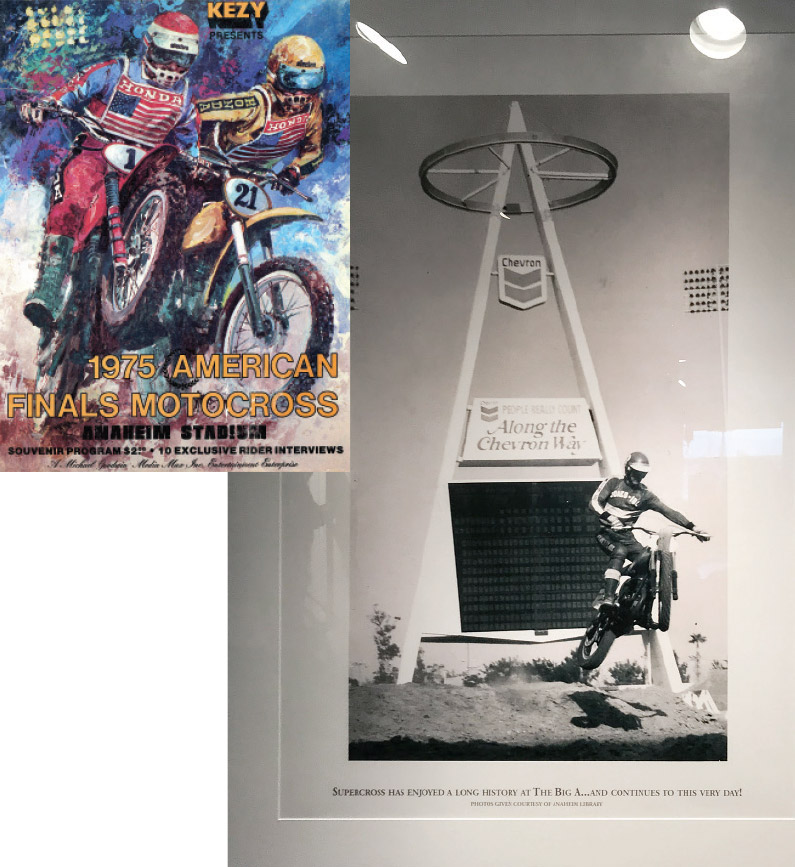



n the far side of the massive parking lot of Angel Stadium of Anaheim is a tiny seafood restaurant called The Catch. Its walls are filled with memorabilia from sporting events held in the big ballfield next door, and if you go into the banquet room and look on the back wall in a corner, you’ll find a photo from the very first Anaheim “stadium motocross,” which took place on December 13, 1975. The photo is of Gary Jones jumping in front of the old Big A, which used to be beyond the stadium’s outfield wall. He’s riding a Jones-Islo 250cc prototype—a bike he built with his father in a motorcycle factory in Mexico—on press day for the race. It’s the earliest Anaheim SX photo I have ever come across.
The ’75 race was originally called the World Motocross Final, as promoter Mike Goodwin of Media AX Enterprises was hoping some of the top Europeans from the just-finished Trans-AMA Series would stick around and participate, but Roger DeCoster and friends all headed home instead. No problem. Goodwin, who basically invented supercross (though the term was not being used yet) simply changed it to the American Motocross Finals, and 23,000 fans showed up to see the race. Goodwin also opened the starting gate to motorcycles of any size. Team Honda’s Marty Smith, the most popular American rider at the time, elected to ride a CR125 against a field of bigger bikes. He actually set the fastest lap time in practice, but then his engine seized in the second of three main events. (At the other end of the spectrum was desert racer Al Baker, who showed up on a Long Beach Honda XL400 thumper.)


The track was designed by soon-to-be AMA Supercross Champion Jimmy Weinert, and he added obstacles like “Insanity Ridge,” “The Matterhorn,” a sand wash, and a set of “Wheel Breaker Whoop-De-Dos.” Weinert was injured and did not race, so he watched as his rival Tony DiStefano won all three main events on his Suzuki works 250. The aforementioned Jones’ unique bike broke, and he failed to finish the race.
By all accounts, the best racing of the night was the one-moto 125cc High School race, which Dave Eropkin and Steve Bauer narrowly lost to 15-year-old Broc Glover, who rode for Valhalla High School of El Cajon—future alma mater of Rick Johnson and Scott Burnworth as well.
The second Anaheim SX happened on December 4, 1976. It was again called the American Motocross Finals, but it was now part of the AMA Supercross Championship, even though that moniker had not come into general usage yet. Controversially, rising star Bob “Hurricane” Hannah, out of title contention for the SX series, declined to race unless Goodwin gave him start money, as the prize money for the race was $20,000.
The event also tried a new format that the riders were not happy about: heat races and semis, funneling the 80-rider field down to 24 finalists for one 20-lap main event. Some riders complained that it put too much emphasis on the final race, but Goodwin held out, saying it would help casual fans who didn’t understand the two- and three-main-event formats used at other stadium motocross events.
The four heat-race winners, all on 250s—Marty Smith, Pierre Karsmakers, Kent Howerton, and Tony DiStefano—finished the main event in that order. In the following week’s coverage, Cycle News offered this: “It was the single biggest payday in stadium history and perhaps the most exciting and successful night of racing for the fan. The riders who won loved the new ‘Class C’ but some of those who lost hated it.”
The new format caught on for 1977 and is a part of AMA Supercross to this day. And with the exception of a couple of years in the late nineties for renovations, Angel Stadium was and is the capitol building of the supercross world. This year’s two races marked the 73rd and 74th time they’ve dropped the starting gate on “stadium motocross” under the Big A. ![]()

